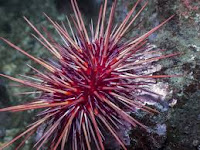MEDITATION:
Reflection and Relaxation
When the sun is in its zenith, half the day is gone, half of the work done, half of life's stirrings over, yet the joy of living, its challenges and rewards are whole and forever, meditate.
Reflection and Relaxation
When the sun is in its zenith, half the day is gone, half of the work done, half of life's stirrings over, yet the joy of living, its challenges and rewards are whole and forever, meditate.
Dr Abe V Rotor
When things seem to be overwhelming, the road long and rough, the horizon far and dim, and you feel powerless under this situation, give yourself time to meditate;
When the wind stops to blow, the treetops still, birds no longer fly, the fields lay bare after harvest time, summer creeps in, and you feel the false calm of doldrums, meditate;
When the first rain is but a shower, shy and naive over the parched landscape and the dry riverbed, listen to the distant thunder, watch the gathering cloud, meditate;
When the mountains are blue in the distance, as blue as the azure sky and the sea resting after tempest, the valley deep and green, be part of the scenery, meditate;
When the birds migrate to the south before winter sets in and return in springtime, imagine the magnificence of the view from above, the adventure of travel, meditate;
When the trees proudly stand together to form a living fort, bastion against the vagaries of nature, abode and domicile of creation to which you are a part, meditate;
When the habagat is in its peak with days and days of rain, the fields now a huge lake, joining the rivers and lakes, it's nature's process of dynamic balance, meditate;
When the amihan sets in, cold wind from the north sweeps over the ripening grains, golden in the sun, undulating, lilting with kids flying kites - you're with them, meditate;
When the world seems to be moving too fast, on a chartless path, you feel you are adrift and part of a bandwagon, move out before it's too late, meditate;
When the trees come alive with music at dawn, mists settle into dewdrops, sparkling like diamonds as the sun rises, the curtain opens a new day - awake, meditate;
When the sun is in its zenith, half the day is gone, half of the work done, half of life's stirrings over, yet the joy of living, its challenges and rewards are whole, meditate;
When the sun sets, dusk the prelude to rest, angelus prayer itself in silence, peace and harmony set in, be at the center of Home, Family and Creator, meditate. ~
Poetry reading is an art. In fact, poetry is intended to be read before an audience to fully appreciate it, its style, its rhyme and rhythm, meter cum expression of the reader. For this particular piece, the author suggests as a background music, Meditation, a symphonic intermezzo from the opera Thaïs by French composer Jules Massenet. The piece is written for solo violin and orchestra. The opera premiered at the Opéra Garnier in Paris on March 16, 1894.






























